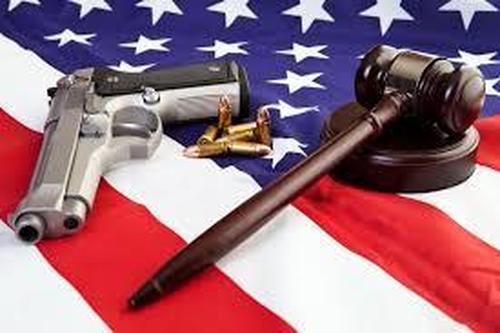The Supreme Showdown: Bruen Has This Makings Of A Major Second Amendment Victory
On Wednesday, the Supreme Court will take up arguably the oldest and most controversial right in our history.
New York State Rifle Association v. Bruen is the first major gun rights case in over ten years to come before the Supreme Court and it has the makings of a major gun rights victory in the making.
The case concerns concealed-carry restrictions under N.Y. Penal Law § 400.00(2)(f) that require a showing of “proper cause.” Lower courts have upheld the New York law, but there are ample constitutional concerns over its vague standard, such as showing that you are “of good moral character.” New York wants to exercise discretion in deciding who needs to carry guns in public while gun owners believe that the law flips the constitutional presumption in favor of such a right.
There are few constitutional rights that have been debated so long in this country as gun rights. Indeed, before other Englishmen were given a written guarantee of the right to bear arms, colonists in Virginia in 1607 were given such a written guarantee by the Crown. Since that time, the right to bear arms has been an engrained part of our culture and ultimately our Constitution.
Despite that history, the meaning of the right has remained the subject of heated debate. That is evident from the fact that it was not until 2008 that the Supreme Court finally recognized the right to bear arms as an individual right in District of Columbia v. Heller. Two years after Heller, in McDonald v. City of Chicago, the court ruled that this right applied against the states.
This is actually the second time in two years that the New York State Rifle Association has come knocking on the door of the Supreme Court. The Association previously challenged a New York law that imposed stringent conditions on the ability of gun owners to even transport their guns outside of their homes. The law was viewed by some of us as unconstitutional under existing case law, but New York politicians insisted that it would be defended all the way up to the Supreme Court. However, when the Court called their bluff and accepted the case, those politicians quickly changed the law and pulled the case before the Court could rule.
The bait-and-switch incensed members of the Court who delayed in the dismissal of the case. Justices Samuel Alito, Neil Gorsuch and Clarence Thomas specifically called out New York for “manipulating” the docket by withdrawing an unconstitutional law just before a final opinion. Justice Brett Kavanaugh joined in the condemnation and added menacingly that “some federal and state courts may not be properly applying Heller and McDonald. The Court should address that issue soon, perhaps in one of the several Second Amendment cases with petitions for certiorari now pending before the Court.”
They ultimately did precisely that and took another case by the very same plaintiffs: the New York State Rifle Association.
The current court membership is arguably the strongest Second Amendment bench in decades. That includes Justice Amy Coney Barrett, who wrote a strong defense of the Second Amendment defense as an appellate judge. While it is always dangerous to predict outcomes before the Court, this case was accepted with a likely intent to reverse the United States Court of Appeals for the Second Circuit (which also upheld the earlier restrictive law).
With lower courts chipping away at its prior precedent, the Court seems poised to push back with a case that brings greater clarity and support for the right to bear guns in public. Many Second Amendment advocates are encouraging the Court to pull back on language from Heller that has been cited mantra-like by lower courts limiting the scope of this right. Many point to the court’s statement in Heller, which acknowledged that “like most rights, the right secured by the Second Amendment is not unlimited.” It then listed possible “sensitive places” for denying permits to former felons.
The Court is likely to continue to recognize reasonable limitations, including possibly some location-based limits. However, it may create a clear presumption in favor of law-bidding citizens to bear arms outside of the home. The natural default under the Second Amendment in favor of gun owners is likely to be strengthened.
The showdown with New York and the Second Circuit in that sense was merely delayed, but not forgotten by the Court. Ironically, the earlier law would have presented a narrower platform for reconsidering the Second Amendment. By gaming the system a year ago, New York may have delivered a far greater opportunity for Second Amendment advocates in the case.
Of course, the Court could have accepted the case to simply amplify its agreement with the Second Circuit, but I would not count on it. It is like the scene in Braveheart when William Wallace said that he was going to “pick a fight” with the British when others were looking for a compromise. That came as little surprise to his main lieutenant Hamish who shrugged and added “Well, we didn’t get dressed up for nothing.”
https://ift.tt/3BDifBi
from ZeroHedge News https://ift.tt/3BDifBi
via IFTTT


0 comments
Post a Comment